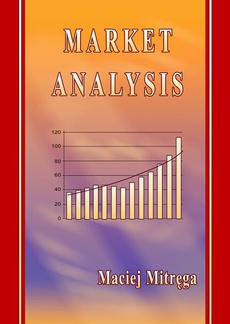INNE EBOOKI AUTORA

-17%
Market analysis
Autor:
Format:
The present textbook came into existence mostly as theoretical and methodical guide in the range of complex and extensive subject matter of the market analysis. The author concentrated on the research projects based on secondary sources of information. They are commonly used in practice (also by small firms), because as a rule they are a lot cheaper than the field research. Consequently, the problems of using primary sources of information remained in the book limited only to pointing main methods. The textbook consists of five chapters. Every chapter comprises the short introduction to problems being reviewed. Discussion problems and numerical exercises can be found at the end of each chapter. Numerous cases of analytic activities are included in chapters. Some of these examples are based on the computer software available at most business schools or accessible free via Internet.
| Rok wydania | 2006 |
|---|---|
| Liczba stron | 129 |
| Kategoria | Publikacje Obcojęzyczne |
| Wydawca | Wydawnictwo Uniwersytetu Ekonomicznego w Katowicach |
| ISBN-13 | 978-83-7246-954-0 |
| Numer wydania | 1 |
| Język publikacji | angielski |
| Informacja o sprzedawcy | ePWN sp. z o.o. |
POLECAMY
Ciekawe propozycje
Spis treści
| PREFACE | 9 |
| Chapter | 1 |
| MARKET AS AN OBJECT OF ANALYSIS | 13 |
| 1. Definition and structure of market | 14 |
| 2. Market mechanism and equilibrium | 18 |
| 3. Types of market | 20 |
| 4. Determinants influencing markets | 22 |
| Discussion problems and exercises | 24 |
| Chapter | 2 |
| PROCEDURE AND INFORMATION SOURCES IN MARKET ANALYSIS | 26 |
| 1. Market analysis versus marketing research | 27 |
| 2. Decision-making process of market subjects | 28 |
| 3. Objectives and process of market analysis | 30 |
| 4. Sources of market information | 32 |
| 5. Secondary sources of information review | 35 |
| 6. Obstacles in the analysis of the foreign markets using secondary information sources | 38 |
| 7. Selected methods of gathering information from primary sources | 40 |
| 8. Data preparation | 42 |
| Discussion problems and exercises | 43 |
| Chapter | 3 |
| DIAGNOSIS OF MARKET | 45 |
| 1. Content analysis | 46 |
| 2. Simple description of quantitative data | 47 |
| 3. Market potential | 49 |
| 4. Elasticity of demand | 52 |
| 5. Market share analysis | 58 |
| 6. Strategic group map | 61 |
| 7. Analysis of distribution intensity | 66 |
| 8. Analysis of advertising intensity | 70 |
| Discussion problems and exercises | 72 |
| Chapter | 4 |
| PROGNOSIS OF MARKET | 75 |
| 1. Trend projection models | 76 |
| 2. Qualitative methods of market development analysis | 90 |
| Discussion problems and exercises | 92 |
| Chapter | 5 |
| SPATIAL ANALYSIS OF MARKET | 94 |
| 1. Procedure of the spatial analysis | 95 |
| 2. Intensity indexes’ method | 96 |
| 3. Feature standardizing method (point method) | 97 |
| 4. Taxonomic methods | 100 |
| 4.1. Method of absolute average differences and Tchekanovski’s diagram | 102 |
| 4.2. Method of the relative differences | 106 |
| 4.3. Method of square of differences | 107 |
| 4.4. The Wrocław taxonomy (spanning tree) method | 113 |
| 5. Reilly’s law of retail gravitation | 117 |
| 6. Gini coefficient and Lorenz curve | 119 |
| Discussion problems and exercises | 122 |
| REFERENCES | 125 |
| LIST OF EXAMPLES | 127 |
| LIST OF FIGURES | 128 |
| LIST OF TABLES | 129 |




























